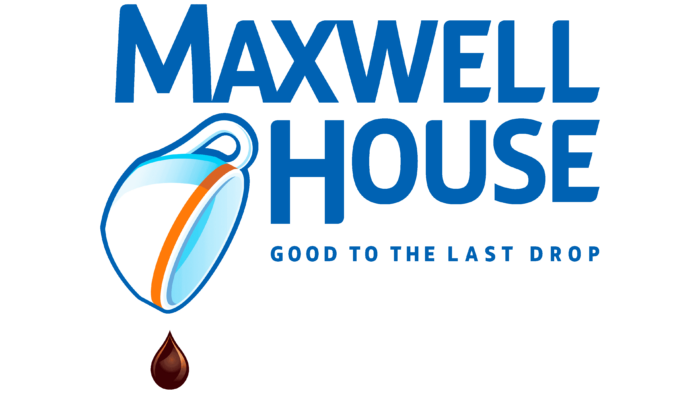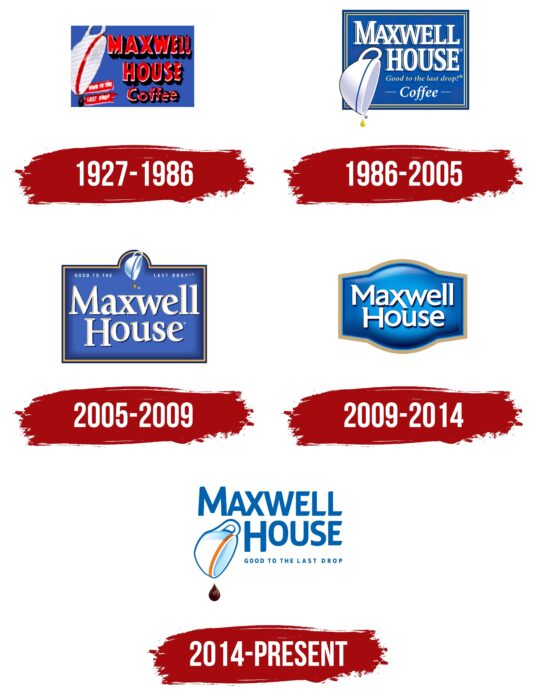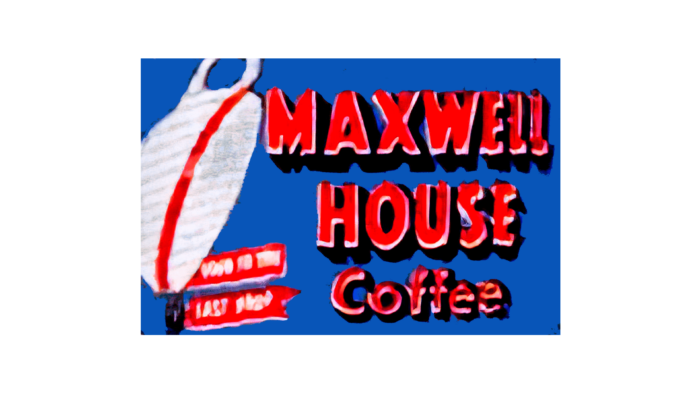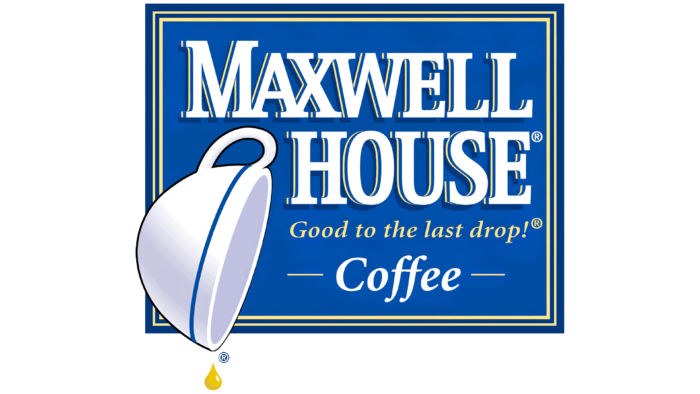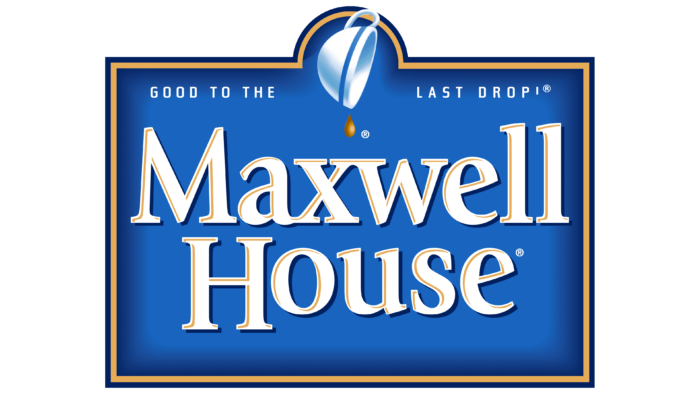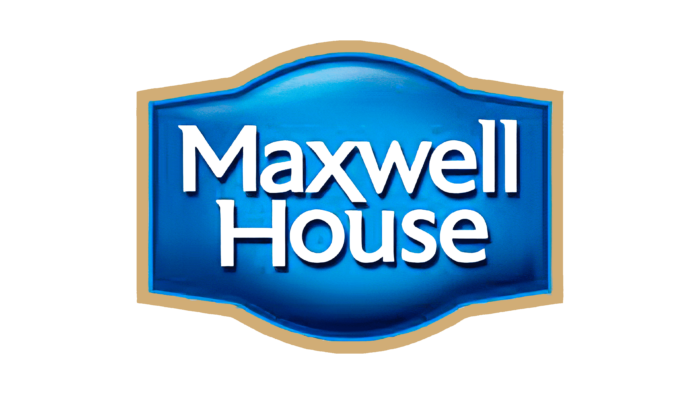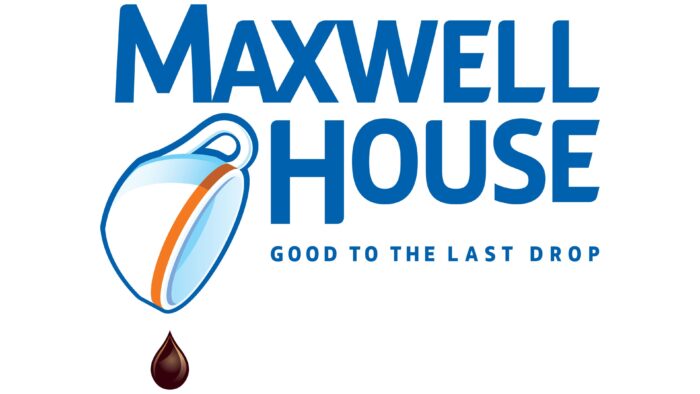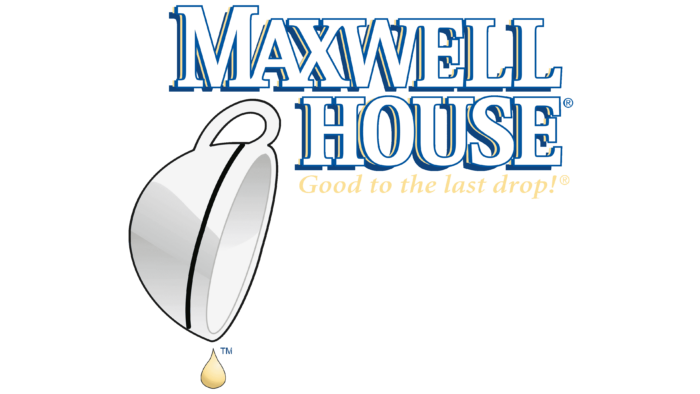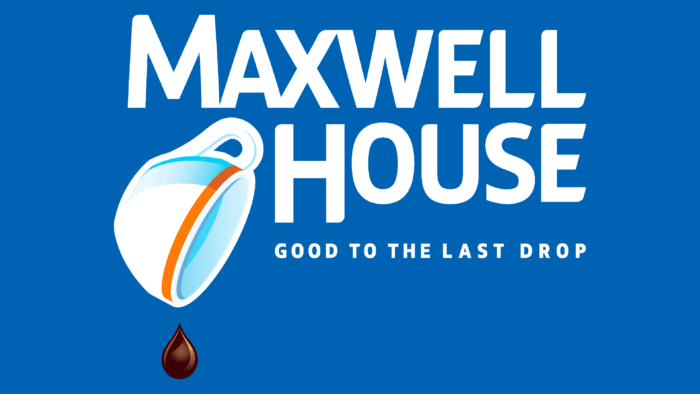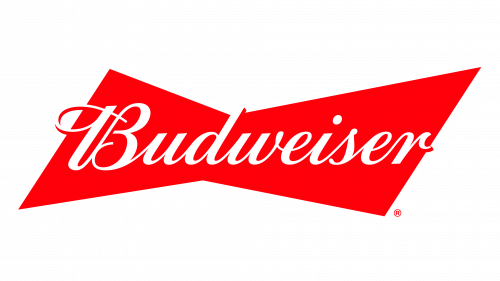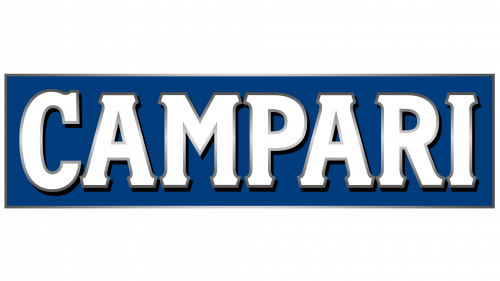The Maxwell House logo coffee drink runs out so quickly that you don’t have time to notice. Delicious, invigorating, fragrant coffee from the emblem will be a pleasant addition to the morning awakening ritual.
Maxwell House: Brand overview
| Founded: | 1892 |
| Founder: | Kraft Heinz, JDE Peet’s |
| Headquarters: | United States |
| Website: | myfoodandfamily.com |
Meaning and History
Until the 1980s, Maxwell House was one of the most popular coffee brands in the United States. It owed its success in part to the slogan “Good to the Last Drop,” which was coined back in 1917. The phrase was so successful that it is still used today and is reflected in the corporate logo. Its origin remains unclear: for a long time, it was said that these words were said in 1907 by Theodore Roosevelt when he was treated to a cup of freshly brewed drink at Andrew Jackson Manor. Company officials later acknowledged that the former president of the General Foods Corporation was the author of the famous motto. Nevertheless, they continue to argue that Roosevelt drank Maxwell House’s coffee and expressed his approval.
The creatives played up the slogan in the logo by adding a cup with a falling drop to the inscription. The design changed several times until a modern version appeared. Interestingly, French consumers accepted the “Good to the Last Drop” concept without enthusiasm. The coffee producer had to look for a different approach to please them urgently. He found out that French people like to drink drinks with high caffeine content, so he offered them a new, stronger product, accompanying it with an emblem depicting a spoon standing vertically in a cup. But this promotional drawing was never the official graphic mark of Maxwell House.
1927 – 1986
In the late 1920s, the coffee brand was taken over by Postum Co., which General Foods later bought. A three-line logo began to be used with “MAXWELL HOUSE Coffee,” with each word placed one below the other and the letters casting black shadows. A white cup occupied the left side with a handle and a red rim around the edge. It was tilted so that a drop of coffee dripped from it. The motto “GOOD TO THE LAST DROP” was also placed on two red ribbons. A large blue rectangle served as the background for all the elements.
1986 – 2005
In 1985, Maxwell House’s decaf blend hit the shelves, and just a year later, the brand changed its logo. It abandoned the red color scheme but kept the blue rectangular base, complete with a wide border with gold inserts. The cup (now white with a blue rim) was moved to the lower-left corner, with the drip turned yellow, like vegetable oil. The rest of the space was occupied by writing. At the top was the word “MAXWELL” with an enlarged “M.” Because of the long serifs, the first five letters blended into each other. Just below was the second part of the name: “HOUSE.” The third line was the famous company slogan, written in gold italics, and under it was the word “Coffee,” for which the designers chose a similar slanted font, but white.
2005 – 2009
The new century brought another change to the Maxwell House identity. The brand name was moved to the center, and all the letters, except for the first “M” and “H,” were moved to lower case. The font became more dynamic with asymmetry and tapered serifs. The word “Coffee” is gone, and the phrase “GOOD TO THE LAST DROP” is at the top. So it wouldn’t draw too much attention, the designers reduced it and replaced italics with a thin geometric font without serifs. And the most important component, the cup, was right above “Maxwell,” so the drop, which turned brown, fell somewhere between the “x” and the “w.” Because of this redistribution of elements, the creators of the logo had to add a semicircle to the top of the rectangular base; otherwise, the cup wouldn’t fit. The blue background had a radial gradient with darkened edges.
2009 – 2014
Following a newfangled trend, the designers departed from tradition and simplified the Maxwell House brand name. Its name was at the center of the brand’s visual identity, while the teardrop cup and the iconic slogan were removed. This drew criticism from consumers because everyone was used to the old advertising concept and recognized their favorite coffee exactly by the upside-down cup. The inscription was made in a low-contrast font with short triangular serifs. The designers lengthened the lower right “x” slightly to create visual balance. They made the rectangular base symmetrical for the same purpose by adding the same bulges at the top and bottom. The shade of blue became much lighter, and the location of the gradient changed so that the central circle was highlighted.
2014 – today
Realizing the importance of tradition, the coffee producer returned to the old concept. In 2014, it launched several new products, redesigned the packaging, and introduced a remarkably similar logo to the version adopted back in 1986. Of course, there are several significant differences between them. First, it concerns the colors: now all the lettering is blue, and the base is white. Secondly, the font has changed: “MAXWELL HOUSE” and “GOOD TO THE LAST DROP” are written in the same bold grotesque. Only the letters in the brand name have some corners cut and rounded in places.
The cup, which is the main element, has taken on a blue outline and blue shadows. The bezel, which used to be blue as well, has become orange. As for the coffee drop, the designers visibly enlarged it. And also added a brown gradient and glare to make it look three-dimensional.
Bringing back the classic design of the logo, the owners of the brand showed its vintage look and its devotion to tradition. The slogan with a clear illustration communicates the product’s benefits in an understandable form for consumers. Marketers couldn’t help bringing it back because Maxwell House owes its success to the inverted cup with a falling drop. The coffee producer reintroduced the public to the old advertising concept invented in the 1920s and was so memorable that it still has its effect a hundred years later.
Font and Colors
The logo designers chose a bold sans serif font for “GOOD TO THE LAST DROP” and a modified version for the phrase “MAXWELL HOUSE.” It is the brand name that is the most interesting because it has asymmetry: many corners are rounded, the horizontal “E” strokes are unevenly cut, the “M” and “H” are disproportionately large compared to the other letters, the “M,” “A,” “X” and “W” merge together at the extremes. The basis of the color scheme is traditional: white and blue. But now they are diluted with orange, blue and brown in several shades.
Maxwell House color codes
| Lapis Lazuli | Hex color: | #0061ae |
|---|---|---|
| RGB: | 0 97 174 | |
| CMYK: | 100 44 0 32 | |
| Pantone: | PMS 300 C |
| Baby Blue | Hex color: | #6dcff6 |
|---|---|---|
| RGB: | 109 207 246 | |
| CMYK: | 56 16 0 4 | |
| Pantone: | PMS 311 C |
| Ruddy Blue | Hex color: | #7ca8d9 |
|---|---|---|
| RGB: | 124 168 217 | |
| CMYK: | 43 23 0 15 | |
| Pantone: | PMS 292 C |
| Uranian Blue | Hex color: | #c6e9fc |
|---|---|---|
| RGB: | 198 233 252 | |
| CMYK: | 21 8 0 1 | |
| Pantone: | PMS 635 C |
| Ruddy Brown | Hex color: | #c25f28 |
|---|---|---|
| RGB: | 194 95 40 | |
| CMYK: | 0 51 79 24 | |
| Pantone: | PMS 1595 C |
| Pumpkin | Hex color: | #f57921 |
|---|---|---|
| RGB: | 245 121 33 | |
| CMYK: | 0 51 87 4 | |
| Pantone: | PMS 1585 C |
| Dark Sienna | Hex color: | #35020b |
|---|---|---|
| RGB: | 53 2 11 | |
| CMYK: | 0 96 79 79 | |
| Pantone: | PMS 4975 C |
| Caput Mortuum | Hex color: | #532822 |
|---|---|---|
| RGB: | 83 40 34 | |
| CMYK: | 0 52 59 67 | |
| Pantone: | PMS 483 C |
| Beaver | Hex color: | #93654d |
|---|---|---|
| RGB: | 147 101 77 | |
| CMYK: | 0 31 48 42 | |
| Pantone: | PMS 7525 C |
